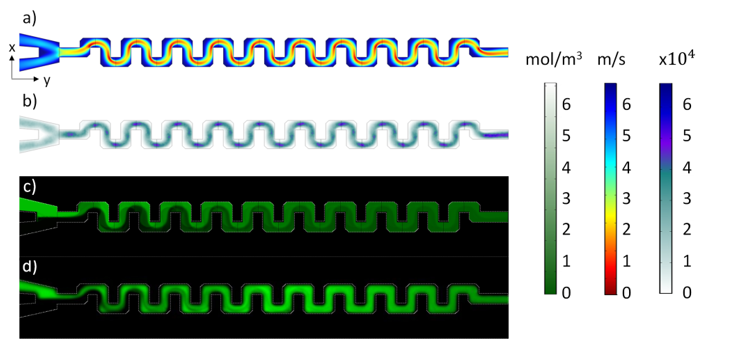Microfluidic devices which integrate both rapid mixing and liquid jetting for sample delivery are an emerging solution for studying molecular dynamics via X-ray diffraction. Here we use finite element modelling to investigate the efficiency and time-resolution achievable using microfluidic mixers within the parameter range required for producing stable liquid jets. Three-dimensional simulations, validated by experimental data, are used to determine the velocity and concentration distribution within these devices. The results show that by adopting a serpentine geometry, it is possible to induce chaotic mixing, which effectively reduces the time required to achieve a homogeneous mixture for sample delivery. Further, we investigate the effect of flow rate and the mixer microchannel size on the mixing efficiency and minimum time required for complete mixing of the two solutions whilst maintaining a stable jet. In general, we find that the smaller the cross-sectional area of the mixer microchannel, the shorter the time needed to achieve homogeneous mixing for a given flow rate. The results of these simulations will form the basis for optimised designs enabling the study of molecular dynamics occurring on millisecond timescales using integrated mix-and-inject microfluidic devices.

